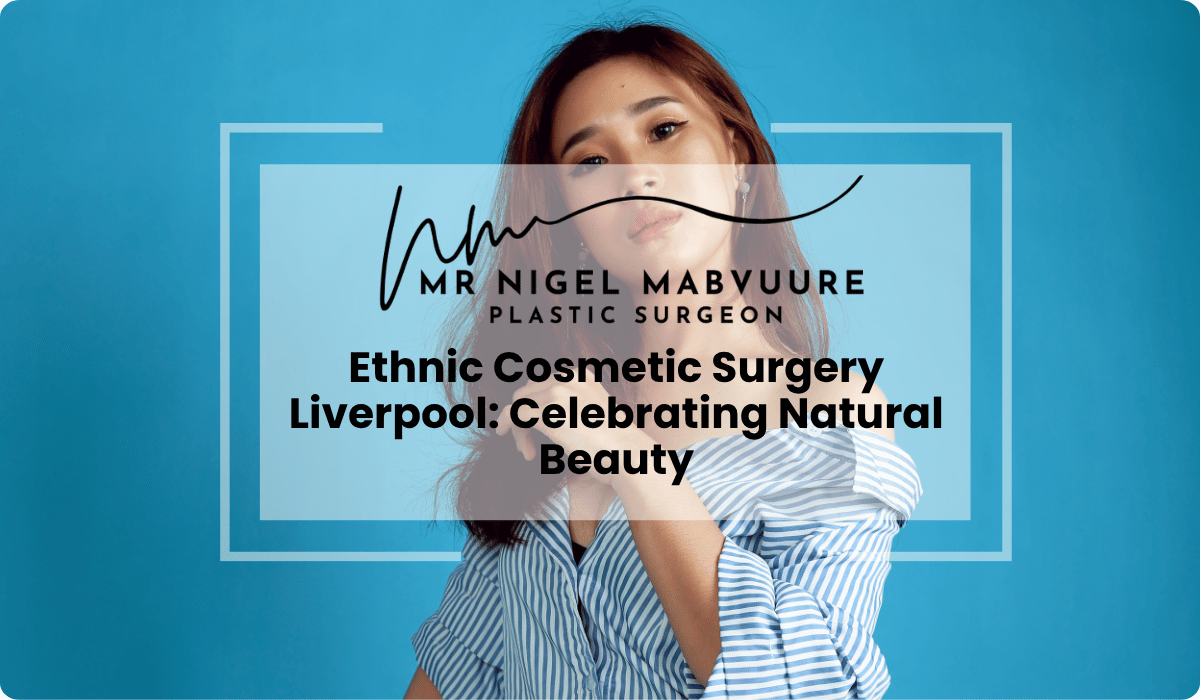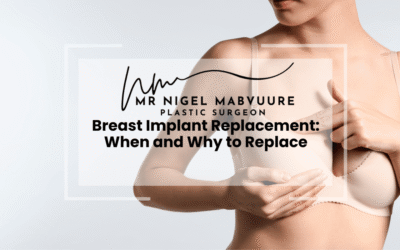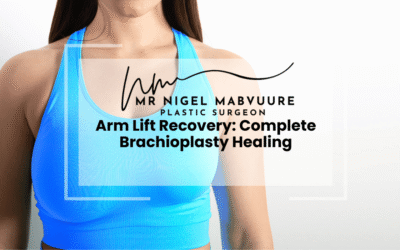Key Takeaways
- Ethnic cosmetic surgery focuses on enhancing natural features while respecting cultural heritage, rather than westernising appearances.
- Anatomical differences across ethnicities require specialised surgical techniques, particularly for skin characteristics, facial structure, and healing tendencies.
- Successful procedures preserve ethnic identity through tailored approaches to rhinoplasty, facial contouring, and other enhancements.
- Cultural sensitivity during consultations is essential, including appropriate visual references and communication tools.
- Liverpool surgeons have developed advanced ethnicity-specific techniques that address unique concerns while delivering natural-looking results.
- Patients should select surgeons with demonstrated experience in their specific ethnic group and discuss realistic expectations regarding outcomes and recovery.
- The most successful outcomes enhance features while maintaining cultural identity, resulting in increased confidence without compromising heritage.
Table of Contents
- Understanding Ethnic Cosmetic Surgery: A Cultural Approach
- How Does Ethnicity Influence Surgical Techniques?
- Preserving Heritage: Tailored Procedures for Diverse Features
- Cultural Sensitivity in Cosmetic Surgery Consultations
- Advanced Ethnicity-Specific Techniques in Liverpool
- What Should Ethnic Patients Consider Before Surgery?
- Celebrating Diversity: Success Stories from Liverpool Clinics
Understanding Ethnic Cosmetic Surgery: A Cultural Approach
Ethnic cosmetic surgery represents a specialised approach to aesthetic procedures that respects and celebrates the unique facial and body characteristics associated with different ethnic backgrounds. In Liverpool’s diverse community, this branch of cosmetic surgery has evolved significantly, moving away from standardised Western beauty ideals towards embracing and enhancing natural ethnic features.
The fundamental principle of ethnic cosmetic surgery is not to westernise features but to refine and balance them within the context of a person’s cultural heritage. This might involve addressing specific concerns common to certain ethnic groups—such as eyelid structure in East Asian patients, nasal refinement in Middle Eastern or African patients, or facial contouring techniques for South Asian individuals—while maintaining the distinctive characteristics that reflect their heritage.
Liverpool’s cosmetic surgery specialists have developed expertise in understanding the anatomical differences across ethnicities, including variations in skin thickness, pigmentation, scarring tendencies, and facial structure. This knowledge forms the foundation of culturally sensitive approaches that avoid the ‘one-size-fits-all’ methodology that dominated earlier cosmetic surgery practices.
How Does Ethnicity Influence Surgical Techniques?
Ethnicity significantly impacts surgical planning and execution in cosmetic procedures, requiring surgeons to adapt their techniques to accommodate different anatomical characteristics. The influence of ethnicity extends to virtually every aspect of cosmetic surgery, from pre-operative assessment to post-operative care.
Skin characteristics vary considerably across ethnic groups. African and South Asian skin typically has more melanin, making it more prone to hyperpigmentation and keloid scarring. This necessitates careful incision placement and meticulous wound closure techniques to minimise visible scarring. East Asian skin often has a thicker dermis, which affects how tissues respond to lifting and tightening procedures.
Facial structure differences also dictate surgical approaches. For example, rhinoplasty techniques for African patients often focus on building up the nasal bridge and refining the tip, while procedures for Middle Eastern patients might involve reducing a prominent dorsal hump while preserving ethnic character. East Asian blepharoplasty requires specialised techniques that create or enhance an upper eyelid crease without westernising the appearance.
Body contouring procedures must account for differences in fat distribution patterns and body proportions across ethnicities. Liverpool surgeons specialising in ethnic cosmetic surgery understand these nuances and customise their approach accordingly, ensuring results that enhance rather than erase ethnic characteristics.
Preserving Heritage: Tailored Procedures for Diverse Features
The preservation of ethnic identity through cosmetic enhancement represents a cornerstone of modern aesthetic surgery in Liverpool. Tailored procedures acknowledge diverse beauty standards and work within cultural frameworks rather than imposing homogenised ideals. This approach requires both technical expertise and cultural awareness from surgeons.
Rhinoplasty exemplifies this philosophy particularly well. For patients of African descent, surgeons focus on structural refinement while maintaining appropriate width and nostril shape that harmonises with other facial features. Similarly, for East Asian patients seeking nasal refinement, techniques emphasise subtle bridge augmentation and tip definition without creating an incongruous appearance.
Facial contouring procedures, including cheek augmentation and jawline refinement, are customised to enhance balance while respecting ethnic facial proportions. For South Asian patients, this might involve subtle chin augmentation that improves profile without altering their fundamental appearance. Middle Eastern patients might seek refinement of a strong jawline while maintaining the characteristic strength of their facial structure.
Lip procedures represent another area where ethnic sensitivity is crucial. African and Caribbean patients often seek refinement rather than reduction of naturally full lips, while East Asian patients might request subtle enhancement that remains proportionate to their facial features. The goal remains consistent: enhancement that celebrates rather than diminishes ethnic characteristics.
Cultural Sensitivity in Cosmetic Surgery Consultations
Cultural sensitivity forms the foundation of successful consultations with patients from diverse backgrounds. Liverpool’s leading cosmetic surgeons recognise that effective communication extends beyond medical terminology to include understanding cultural contexts, family dynamics, and community perspectives that influence a patient’s aesthetic goals.
The consultation process begins with active listening, allowing patients to express their desires in their own terms rather than imposing standardised beauty ideals. Surgeons skilled in cultural sensitivity surgery understand that patients may use different language to describe their goals—references to celebrities from their own cultural background, for instance, or concepts of beauty specific to their heritage.
Visual communication tools have evolved to better serve diverse patients. Progressive clinics maintain portfolios showcasing results in patients of various ethnicities, allowing individuals to see realistic outcomes in people with similar features. Computer imaging technology enables surgeons to demonstrate potential results while preserving ethnic characteristics, facilitating more meaningful discussions about expectations.
Language considerations also play a vital role in culturally sensitive consultations. Liverpool clinics increasingly offer multilingual services or interpreter support to ensure patients can fully express their concerns and understand all aspects of proposed procedures. This commitment to communication helps build trust and ensures patients feel respected throughout their surgical journey.
Advanced Ethnicity-Specific Techniques in Liverpool
Liverpool has emerged as a centre for advanced ethnicity-specific techniques in cosmetic surgery, with specialists developing and refining approaches tailored to diverse patient populations. These innovative methods address the unique anatomical characteristics of different ethnic groups while delivering natural-looking results.
For East Asian patients, modified blepharoplasty techniques create or enhance an upper eyelid crease while preserving the essential character of the Asian eye. These procedures avoid the outdated “Westernisation” approach, instead focusing on creating a natural-looking double eyelid that complements existing facial features. Surgeons employ precise measurements and customised incision patterns based on individual eye anatomy.
African and Caribbean rhinoplasty has advanced significantly, with Liverpool surgeons utilising structural grafting techniques that provide refinement while maintaining appropriate width and projection. These approaches often incorporate cartilage grafting to build nasal structure rather than simply reducing tissue, resulting in improved breathing function alongside aesthetic enhancement.
For South Asian patients, facial contouring techniques have evolved to address common concerns like profile balance and jawline definition. Combination approaches might include subtle chin augmentation, targeted liposuction, and non-surgical treatments to create harmony while preserving ethnic characteristics.
Advanced scar management protocols have been developed specifically for patients with higher risks of keloid formation or hyperpigmentation. These include precise surgical techniques, customised post-operative care regimens, and early intervention strategies to optimise healing in different skin types.
What Should Ethnic Patients Consider Before Surgery?
Patients from diverse ethnic backgrounds should undertake specific considerations before pursuing cosmetic surgery to ensure optimal outcomes that respect their heritage. These considerations extend beyond standard surgical planning to include cultural, anatomical, and recovery factors unique to different ethnicities.
Surgeon selection represents perhaps the most critical decision. Patients should seek specialists with demonstrated experience in their specific ethnic group, evidenced through before-and-after portfolios and testimonials from similar patients. During consultations, assess whether the surgeon discusses ethnicity-specific considerations unprompted and demonstrates understanding of your cultural aesthetic preferences.
Realistic expectations require careful discussion, particularly regarding scarring potential. Patients with darker skin tones face higher risks of hyperpigmentation and keloid formation. Understanding these risks and the preventative measures available helps prepare for the recovery process. Similarly, certain procedures may require longer recovery periods for some ethnic groups due to differences in tissue healing.
Family and community perspectives merit consideration, as cosmetic enhancements can sometimes be perceived differently within various cultural contexts. Some patients benefit from discussing their plans with trusted family members or friends, while others may prefer privacy. Liverpool surgeons respect these personal choices while providing supportive guidance.
Timing considerations are particularly important for patients with higher melanin levels, as procedures are often best scheduled during periods of reduced sun exposure to minimise post-inflammatory hyperpigmentation risks. A comprehensive pre-surgical plan should include discussion of these seasonal factors.
Celebrating Diversity: Success Stories from Liverpool Clinics
Liverpool’s cosmetic surgery community has embraced the philosophy of celebrating diverse beauty standards, resulting in numerous success stories that highlight the positive impact of ethnically sensitive approaches. These outcomes demonstrate how skilled surgical intervention can enhance features while honouring cultural heritage.
One notable trend involves patients seeking refinement rather than fundamental change. For example, East Asian patients requesting subtle eyelid procedures report high satisfaction when surgeons create natural-looking results that maintain their ethnic identity. Similarly, Middle Eastern patients pursuing rhinoplasty express appreciation for techniques that refine proportions while preserving characteristic nasal structure.
The psychological benefits extend beyond physical changes. Many patients report increased confidence stemming not from “looking different” but from addressing specific concerns while still looking like themselves. This outcome represents the true measure of success in ethnic cosmetic surgery—enhancement that allows individuals to feel more comfortable in their own skin without compromising their cultural identity.
Liverpool clinics have documented particularly positive outcomes in combination approaches that address multiple concerns while maintaining ethnic harmony. For instance, facial balancing procedures for South Asian patients might include subtle chin refinement alongside non-surgical treatments that enhance overall facial proportions without creating an artificial appearance.
Patient testimonials consistently highlight the importance of the consultation process in achieving satisfying results. Those who report the highest satisfaction typically describe surgeons who listened carefully to their goals, demonstrated cultural understanding, and provided realistic visualisations of potential outcomes specific to their ethnic features. This collaborative approach ensures results that truly celebrate individual beauty within its cultural context.
Frequently Asked Questions
What is ethnic cosmetic surgery and how does it differ from standard procedures?
Ethnic cosmetic surgery is a specialised approach that respects and enhances the unique facial and body characteristics associated with different ethnic backgrounds. Unlike standard procedures that might apply Western beauty ideals uniformly, ethnic cosmetic surgery focuses on refining features while preserving cultural identity. The techniques are specifically adapted to account for differences in skin thickness, pigmentation, facial structure, and scarring tendencies across various ethnicities.
How do surgeons adapt techniques for different skin types?
Surgeons adapt techniques based on ethnicity-specific skin characteristics. For darker skin tones with more melanin (African, South Asian), they use meticulous incision placement and wound closure to minimise hyperpigmentation and keloid scarring risks. For East Asian skin with thicker dermis, they modify lifting and tightening approaches. Post-operative care protocols are customised with specific scar management strategies, and timing of procedures may be planned around seasons to reduce sun exposure for patients prone to pigmentation changes.
What should I look for when choosing a surgeon for ethnic cosmetic surgery?
When choosing a surgeon for ethnic cosmetic surgery, look for specialists with demonstrated experience in your specific ethnic group, evidenced through before-and-after portfolios of similar patients. The surgeon should discuss ethnicity-specific considerations unprompted during consultation and demonstrate understanding of your cultural aesthetic preferences. Verify they have training in diverse anatomy and techniques, offer culturally sensitive communication (possibly including multilingual services), and provide realistic expectations regarding outcomes and recovery specific to your ethnicity.
Will ethnic cosmetic surgery make me look “Westernised”?
Modern ethnic cosmetic surgery specifically aims to avoid “Westernising” features. The fundamental principle is to refine and balance features within the context of your cultural heritage, not to erase ethnic characteristics. Skilled surgeons enhance your natural features while maintaining the distinctive aspects that reflect your heritage. During consultation, clearly communicate your desire to preserve your ethnic identity, and review the surgeon’s previous work with patients of similar background to ensure their approach aligns with celebrating rather than diminishing ethnic characteristics.
Are there specific procedures that are more common for certain ethnic groups?
Yes, certain procedures are more commonly sought by specific ethnic groups based on characteristic features. East Asian patients often seek blepharoplasty to create or enhance an upper eyelid crease. African and Middle Eastern patients frequently request rhinoplasty focusing on different goals—bridge augmentation for African patients versus dorsal hump reduction for Middle Eastern patients. South Asian individuals commonly seek facial contouring procedures for profile balance. However, these trends vary widely among individuals, and ethical surgeons focus on personal goals rather than assuming ethnic-based preferences.
How does recovery differ for patients with different ethnic backgrounds?
Recovery experiences vary across ethnicities primarily due to skin characteristics. Patients with higher melanin levels (African, South Asian, Hispanic) typically require more rigorous sun protection and longer follow-up periods to monitor for hyperpigmentation. They may also need extended scar management protocols, including silicone sheets or steroid injections to prevent keloid formation. Swelling may persist longer in some ethnic groups, particularly in East Asian patients undergoing facial procedures. Surgeons provide ethnicity-specific recovery guidelines addressing these variations to optimise healing and results.
Can ethnic cosmetic surgery improve function as well as appearance?
Yes, ethnic cosmetic surgery often improves both function and appearance. For example, rhinoplasty techniques for African patients frequently incorporate structural grafting that enhances breathing while refining aesthetics. East Asian blepharoplasty can improve visual fields for patients with significant upper eyelid skin excess. Body contouring procedures can reduce friction and skin irritation in areas where certain ethnic groups may have characteristic tissue distribution. A comprehensive approach considers both the functional and aesthetic aspects of procedures, particularly when addressing ethnicity-specific anatomical variations that may affect physical comfort.




